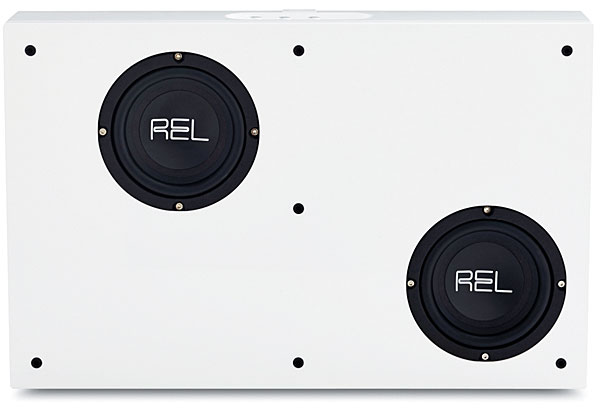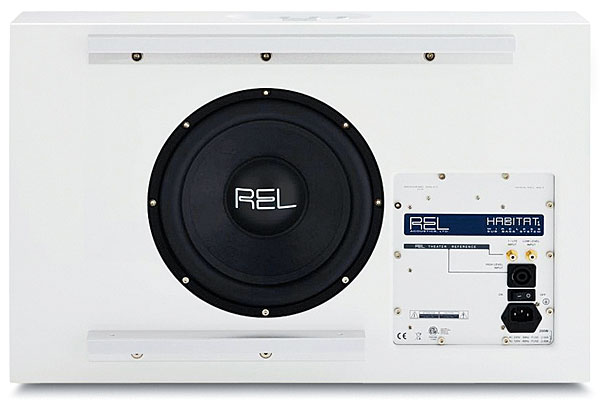I've sold Rel and many other quality subs for years and currently own 4 Rel subs. The fact that you bi-passed the main reason for buying a Rel makes the rest of the review compromised and invalid. Calling into question Rel's superb way of wiring their subs, calling it a "scheme" and then resorting to "well this is the way it's normally done so that's how I'm going to do it", shows an immature hubris on your part. You don't deserve to use or review anything other than "traditional" cookie cut subwoofers. Rels are just astonishing when used CORRECTLY and oh follow the manual to the letter. There is a reason they are on the pricier side of subwoofers and it's their wiring "scheme" as you put it. It shares the exact signal as the fronts (can wire center or rears as well), so not only is there no delay, but also a surreal bond and bass enhancement that just CANNOT be duplicated with just lfe out. If you don't use that "scheme", it's like buying a house and living on the porch. Worst review and admitted ignorance I have ever read from such a fine publication I have always respected. Let's hope this is just an egregious anomaly.
REL Acoustics Habitat1 Subwoofer

AT A GLANCE
Plus
Décor-friendly form factor
Beautiful build quality
Surprisingly easy installation
Minus
Low output
THE VERDICT
The Habitat1 has a terrific industrial design that may work where a traditional sub won’t, but don’t expect miracles.
Almost every subwoofer on the market today is a boring, bulky black box, designed with hardly a thought about how the thing’s going to look in a living room. With its new Habitat1 subwoofer, REL joins the small group of manufacturers who’ve put serious thought into making their subwoofers blend in with room décor.
The slim Habitat1 can sit flat on the floor, snug up against a wall, or even mount directly onto a wall. Wall-mounted, it stands out just 7.13 inches, so it looks more like an air conditioner than a subwoofer. And by that I mean one of those slim, stylish air conditioners the Europeans and Japanese use to cool a room, not one of the monsters we Americans use.

How Do They Do It?
Instead of using a single large driver, the Habitat1 uses two slim, 6.5-inch drivers, both of which fire forward and hide behind a fabric grille. A rear-firing, 10-inch passive radiator reinforces the low bass; the wall mounts leave 1.5 inches of space for the radiator to breathe. A 150-watt RMS Class D internal amplifier drives the dual woofers.
Befitting an on-wall design, the Habitat1 has wireless capability built in and comes with a small wireless transmitter that connects to your system. The sub itself has a full set of inputs, so you can use a wired connection if you choose.
REL says the Longbow wireless technology used in the Habitat1 uses no data compression and has low latency, which means it doesn’t appreciably delay the bass relative to the mids and treble. (I was able to measure this, as we’ll discuss below.)
How Do They Wire It?
Longtime audiophiles are probably aware that REL offers a hookup scheme different from any other subwoofer manufacturer. The sub and the wireless transmitter each have three inputs. Two are common: an RCA line-level input intended to accept full-range signals from a preamp’s line output and another RCA input intended for the .1/LFE channel of a home theater system.
The third is a high-level (i.e., speaker cable) input in the form of a Neutrik speakON connector, a type commonly used for P.A. speakers. REL provides an adapter with a speakON plug on one end and bare wires on the other; these connect to your amplifier’s outputs. The manual insists on the use of this connection. Thus, instead of filtering the bass out of the main left/right speakers as the crossovers built into audio/video receivers and surround processors do, the REL scheme lets the main speakers run full range. You adjust the subwoofer’s crossover point so the sub starts to come in right at the point where the main speakers’ bass response starts to diminish.

Why do it this way? The idea is that you’re not adulterating the sound of your main speakers by running them through a subwoofer crossover. However, a normal subwoofer setup, with the receiver or processor filtering the bass out of the main speakers, has advantages, too. Freed from having to reproduce deep bass, your main speakers will play much louder with lower distortion. There’s also little or no adjustment required, outside of setting the subwoofer level with the receiver or processor’s test tones and maybe selecting a crossover point.
The high-level input isn’t just for stereo—REL recommends using it for home theater, too, in conjunction with the .1/LFE input. You set your front left and right speakers to Large in your receiver or surround processor’s menu, so the Habitat1 gets the full-range left/right signal plus the LFE signal. The sub includes two input level knobs, one that controls the high-level and full-range RCA input and one that controls the .1/LFE input. This arrange- ment lets you separately tailor the bass level for stereo and for surround sound. For many, this will be a useful feature; lots of home theater fans I know like to set the bass level about +3 decibels higher for movie soundtracks. Some receivers and processors, though, offer ways of presetting different bass levels for stereo and multichannel sound, without subjecting your front left and right speakers to potentially damaging deep bass.
Setup
Because the coolest thing about the Habitat1 is that it can be wall-mounted, I went ahead and wall-mounted it. I worried this might be a nightmare, but it was more like a wonderful dream where I’m reunited with every dog I’ve ever owned then presented with a big bowl of frozen yogurt. You do have to locate a couple of wall studs that can support the sub’s 50 pounds, but once that’s done, REL’s included template makes it easy to position the extruded-aluminum brackets. Rubber gaskets are provided to prevent rattling. Once the brackets were in place, the sub snapped right on. The whole process took about 15 minutes.
Your placement options are a bit limited by wall-mounting, because things like AC outlets and heating/air conditioning vents can get in the way. Fortunately for me, I was able to wall-mount the Habitat1 right in my subwoofer sweet spot, the place in my room where a single sub sounds best from my listening chair. The only difference was that the bottom of the sub sat 17 inches above the floor. (Of course, even when wall-mounted, the REL is no different than any other sub in its sensitivity to room boundaries and position, so the usual rules about finding the right spot still apply.)
Now I had to mate the sub with the wireless transmitter. Except I didn’t have to. All I did was flip on the power, and the Habitat1 figured out this part on its own. I disconnected the power for the sub and transmitter several times during this review, but they always reconnected with no help from me.
The Habitat1’s dual 6.5-inch woofers can’t do much to augment the bass response of a medium to large tower speaker, yet the high-level connection precludes the use of small speakers that can’t handle bass. So I started by using a pair of Hsu Research HB-1 Mk2 minispeakers with the Habitat1 in a stereo setup, using the REL’s high-level input. The HB-1’s not a full-range speaker, but I knew it could handle deep bass content at modest levels without blowing up.
For my home theater listening, I used three Sunfire CRM-2 mini- speakers for the front channels and two CRM-BIPs for the surrounds. The Sunfires, like almost all mini- speakers, are not designed to reproduce full-range signals. Feed them deep bass at high levels, and they will distort, or worse. Thus, I disconnected the high-level input and fed the subwoofer output of my Outlaw 975 surround processor to the .1/LFE input on the Habitat1’s wireless transmitter. This broke REL’s rules, of course. But if Bob Carver (who designed the CRM-2) found out I was running his speakers full range, he’d call me up and politely ask if I’d lost my marbles.
- Log in or register to post comments


"BrokeRule #1," please read the review with a bit more care. You'll see that I did use REL's preferred wiring method for most of the review. I also discussed the downsides of this method; you seem unaware of these. REL's speaker-level wiring method doesn't add significantly to the sub's manufacturing cost; the only difference between it and the speaker-level wiring found on Pioneer's $109 SW-8MK2 is that REL uses a SpeakON connector and adds a potentiometer that lets you mix the speaker- and line-level inputs. You cannot cite any evidence for the superiority of this method other than your own subjective experience, which I suggest might be influenced by the fact that you are a dealer for the product and appear somewhat blinded by your reverence for the brand. Last, if you're going to trash me or anyone else on the Internet, grow a pair and use your real name.



































































